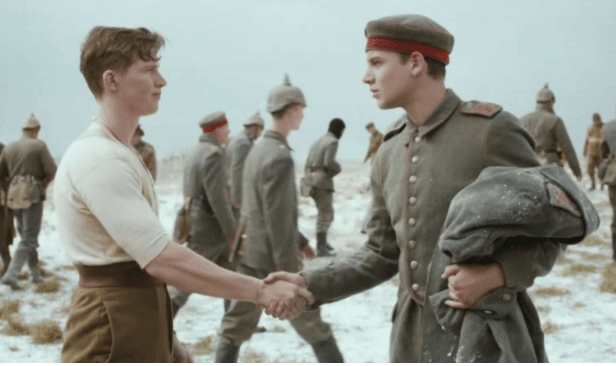 The Libertarian Institute
The Libertarian Institute For a tragically short time, the Spirit of the Prince of Peace drowned out the murderous demands of the State.
n August 1914, Europe’s major powers threw themselves into war with gleeful abandon. Germany, a rising power with vast aspirations, plowed across Belgium, seeking to checkmate France quickly before Russia could mobilize, thereby averting the prospect of a two-front war. Thousands of young Germans, anticipating a six-week conflict, boarded troop trains singing the optimistic refrain: “Ausflug nach Paris. Auf Widersehen auf dem Boulevard.” (“Excursion to Paris. See you again on the Boulevard.”)
The antagonists found themselves mired along a static line of trenches running for hundreds of miles through France and Belgium.
The French were eager to avenge the loss of Alsace and Lorraine to Germany in 1870. The British government, leery of Germany’s growing power, mobilized hundreds of thousands of young men to “teach the Hun a lesson.” Across the continent, writes British historian Simon Rees, “millions of servicemen, reservists and volunteers … rushed enthusiastically to the banners of war…. The atmosphere was one of holiday rather than conflict.”
Each side expected to be victorious by Christmas. But as December dawned, the antagonists found themselves mired along the Western Front – a static line of trenches running for hundreds of miles through France and Belgium. At some points along the Front, combatants were separated by less than 100 feet. Their crude redoubts were little more than large ditches scooped out of miry, whitish-gray soil. Ill-equipped for winter, soldiers slogged through brackish water that was too cold for human comfort, but too warm to freeze.
The unclaimed territory designated No Man’s Land was littered with the awful residue of war – expended ammunition and the lifeless bodies of those on whom the ammunition had been spent. The mortal remains of many slain soldiers could be found grotesquely woven into barbed wire fences. Villages and homes lay in ruins. Abandoned churches had been appropriated for use as military bases.
As losses mounted and the stalemate hardened, war fever began to dissipate on both sides. Many of those pressed into service on the Western Front had not succumbed to the initial frenzy of bloodlust. Fighting alongside French, Belgian, and English troops were Hindus and Sikhs from India, as well as Gurkhas from the Himalayan Kingdom of Nepal.
As losses mounted and the stalemate hardened, war fever began to dissipate on both sides.
These colonial conscripts had been transported from their native soil and deployed in trenches carved out of wintry Belgian cabbage patches. Highland Scots were also found at the Front, proudly wearing their kilts in defiance of the bitter December cold.
The German troops were led by elite Prussian officers, representatives of the bellicose Junker aristocracy. The German rank and file included Bavarian, Saxon, Westphalian, and Hessian reservists, more than a few of whom had lived – or even been born – in England and spoke perfect English. Bismarck’s efforts to unite the scattered German principalities notwithstanding, many German troops remained more attached to their local communities than to what for them was an abstract German nation.

